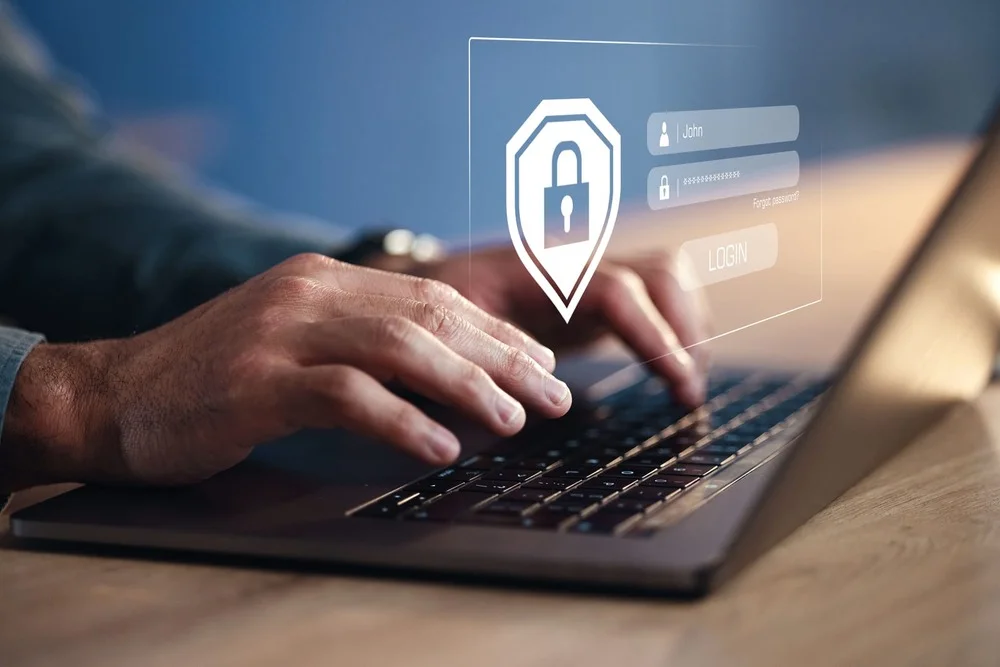Cyber threats don’t take days off, and neither should your defenses. Why? Because when a criminal makes a hit and punches in, he’s struck gold. The average ransom? A cool half a million. That’s money you can retire on.
If you think protecting your digital assets is optional, you’re setting yourself up to be the next headline. Here’s how you can beef up your IT cyber security and keep your business safe from the next big breach.
Debunking Cyber Security No-Nos
“Cyber Attacks Only Target Big Companies”
Think only the big guys are getting hit by hackers? That it’s only a problem for the CIA and Apple? Think again. Forty-three percent of cyberattacks target small businesses, and only 14% are prepared to defend themselves. Why? Because there are two types of attacks: coordinated—strategic, and long-lasting, often funded by governments or hacker farms targeting businesses with heavy protection.
And then there’s the second—opportunistic, where hackers spot a vulnerability and say, “Why not make some bucks? Or wreck some stuff up?” No matter your size, understanding IT security threats is a must.
“Antivirus Software Is Enough Protection”
Antivirus software is crucial, sure—but it’s not Captain America’s shield. If you’re relying solely on it, you’re leaving gaps big enough for cybercriminals to drive trucks through. Ransomware attacks are increasing 105% year-over-year, and antivirus alone won’t stop them.
Phishing scams? There’s no protection against your employees’ lack of awareness or human error. You need a multi-layered defense strategy, or you’re asking for trouble.
The Role of an IT Security Specialist in Safeguarding Businesses
Key Responsibilities of Security Professionals
Your IT security specialist is the proverbial bodyguard. Your Kevin Costner standing between your business and a cyber onslaught. Their responsibilities include:
- Risk Assessment: Identifying where the weak spots are.
- Implementing Security Protocols: Think firewalls, encryption, and VPNs.
- Monitoring and Response: Real-time monitoring to shut down threats before they cause damage.
- Employee Training: Educating your team on what not to click—because human error accounts for 95% of security breaches.
The Importance of IT Security Degrees for Professionals
To tackle today’s threats, a solid educational foundation is vital. IT security degrees arm professionals with the latest strategies in compliance, encryption, and network security. And with a global shortage of 3.5 million cybersecurity professionals, the demand for these skills has never been higher. Now it’s a dog-eat-dog world where someone who knows how to customize firewalls can land a cushy gig just about anywhere they want.
Common IT Security Threats
Malware—The Silent Invader
Malware is the digital equivalent of a home break-in, except it’s often invisible—it’s like a break-in where the crook sets up a tent in your basement and waits for the right time to strike. Whether it’s viruses, worms, or spyware, it’s all designed to steal or damage your data. Last year alone, malware accounted for 28% of cyberattacks, making regular updates and antivirus critical to keeping it out.
Phishing—The Deceptive Trap
Phishing attacks trick your employees into giving up sensitive info, like passwords and credit card details. Ninety-one percent of cyberattacks begin with a phishing email. If your team doesn’t know how to spot the signs, it’s game over. Training and email filters are your best line of defense. Think of them like those Nigerian prince email scams, only on steroids and much more duplicitous.
Ransomware—Holding Data Hostage
Ransomware attacks are up 105% in the past year, and they’re not going anywhere. Hackers lock down your systems until you pay a huge ransom. The solution? Regular backups and robust security measures can save you from shelling out big bucks to get your data back.
They can hold your data hostage, but if you have a replacement, you can just call them up and say, “Shoot it. She means nothing to me.”
How These Threats Evolve and Target Businesses of All Sizes
Cyber threats are evolving faster than most companies can keep up. Why? Because hackers have a lot of money to invest in their trade—and they are constantly reinvesting their earnings in better tech, better tools, better intel.
Whether you’re a small business or a massive corporation, they’ll find a way in if you’re not vigilant. AI is now being used to create more sophisticated phishing scams, making it even harder to differentiate between legitimate and malicious emails. Stay updated, or risk falling behind.
Trends in Cyber Attacks & the Need for Vigilance
The Rise of Sophisticated Attacks
Hackers are getting smarter. From zero-day exploits to advanced persistent threats (APTs), the methods are getting more sophisticated, targeting vulnerabilities before they’re even known. The best defense? Stay on top of software patches and partner with experts who can keep your systems locked tight. It’s that simple. Understand that this isn’t your playing field, and let a pro take the wheel.
Cloud Services & Vulnerabilities
Cloud services offer flexibility—they are the cat’s meow. But they also introduce risks. Sixty-six percent of organizations cite misconfigured cloud settings as the leading cause of data breaches. Securing your cloud environment with strict access controls, encryption, and compliance checks is a no-brainer.
Cloud-Specific Security Practices for Protecting Data
- Secure Access Controls: implement multi-factor authentication (MFA) and strict access policies to ensure that only authorized users can access your cloud data. MFA blocks 99.9% of automated attacks, so it’s one of the easiest and most effective measures you can implement.
- Encryption of Data in Transit and at Rest: encrypting data both in storage and during transmission is essential. Forty-eight percent of breaches involve data in transit, and encryption makes it useless to hackers even if they manage to intercept it.
- Regular Audits and Compliance Checks: regularly audit your cloud setups to catch vulnerabilities before hackers do. Ensuring compliance with industry standards (like HIPAA or GDPR) will not only keep you safe but also help you avoid hefty fines.
Investing in Cyber Security Tools and Infrastructure

Essential Cyber Security Tools
Building a secure infrastructure requires the right tools, such as:
- Firewalls: Blocking unauthorized access to your network.
- Intrusion Detection Systems (IDS): Monitoring your systems for unusual activity.
- Security Information and Event Management (SIEM): Offering real-time analysis of security alerts.
Developing a Long-Term Cyber Security Strategy
You need more than just tech. A long-term IT cyber security strategy includes:
- Regular Updates and Patch Management: Hackers love outdated software.
- Employee Training Programs: A well-trained staff is your first line of defense.
- Incident Response Plan: So when something happens, you’re not scrambling.
The Importance of Education and Professional Expertise
- IT Security Degrees and Certifications: Investing in your team’s education through IT security degrees and certifications like CISSP or CISM ensures they’re equipped to handle the latest threats. The more knowledge your team has, the better they can protect your business.
- Partnering with Security Specialists: If you don’t have the in-house expertise, don’t worry. Partnering with IT security specialists can fill the gaps and provide the protection you need to sleep easy.
Safeguarding Your Digital Assets
Cyber threats are real, and ignoring them is like playing with fire. Implementing strong IT cyber security measures is critical to protecting your business. Understand the landscape, invest in professional expertise, and build a rock-solid security strategy to shield your digital assets from devastation.




